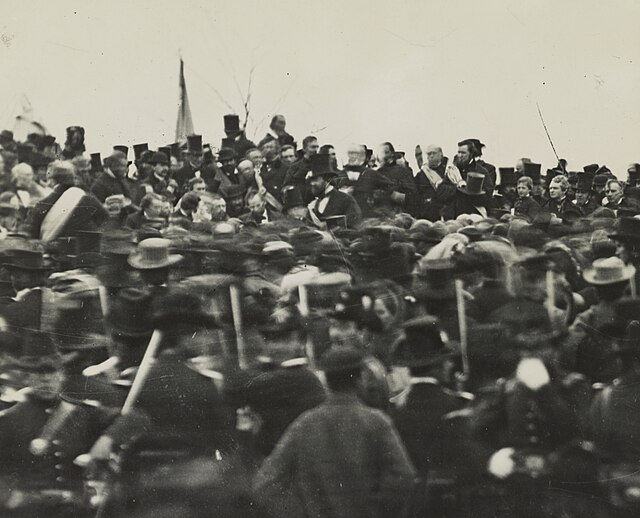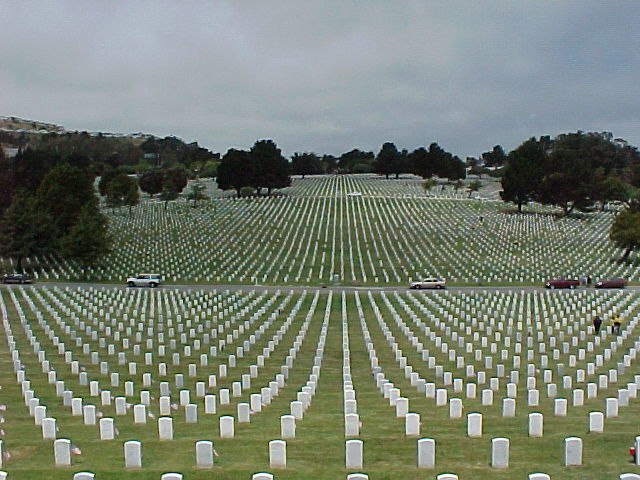Gettysburg National Cemetery
Gettysburg National Cemetery is a United States national cemetery in Gettysburg, Pennsylvania created for Union casualties from the Battle of Gettysburg in the American Civil War. The Battle of Gettysburg, which was fought between July 1 to 3, 1863, resulted in the largest number of casualties of any Civil War battle but also was considered the war's turning point, leading ultimately to the Union victory.
The Soldiers' National Monument at the center Gettysburg National Cemetery" with 18 Union states' areas, one U.S. Regulars area, and three areas for graves of the unknown
President Lincoln (seated, left of center) at the cemetery's consecration, November 19, 1863
Granite bands mark the graves of unknown soldiers.
National Cemetery rostrum (1879)
United States National Cemetery System
The United States National Cemetery System is a system of 164 cemeteries in the United States and its territories. The authority to create military burial places came during the American Civil War, in an act passed by the U.S. Congress on July 17, 1862. By the end of 1862, 12 national cemeteries had been established. Two of the nation's most iconic military cemeteries, Arlington National Cemetery and Gettysburg National Cemetery were established in 1864 and 1863, respectively.
A plaque at Chattanooga National Cemetery that explains the history of the National Cemetery System
Gettysburg National Cemetery, Pennsylvania
Golden Gate National Cemetery, California
Arlington National Cemetery, Virginia







